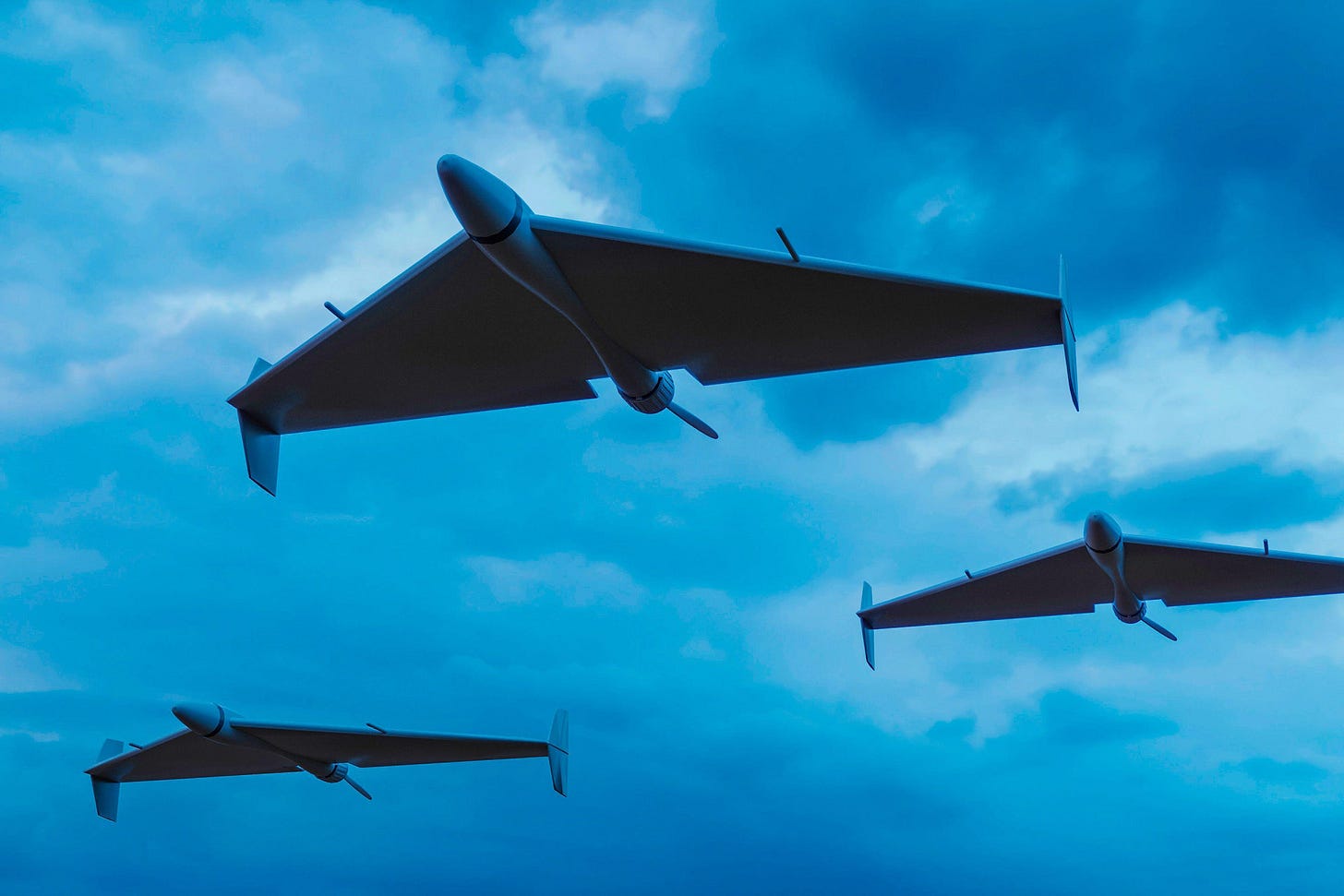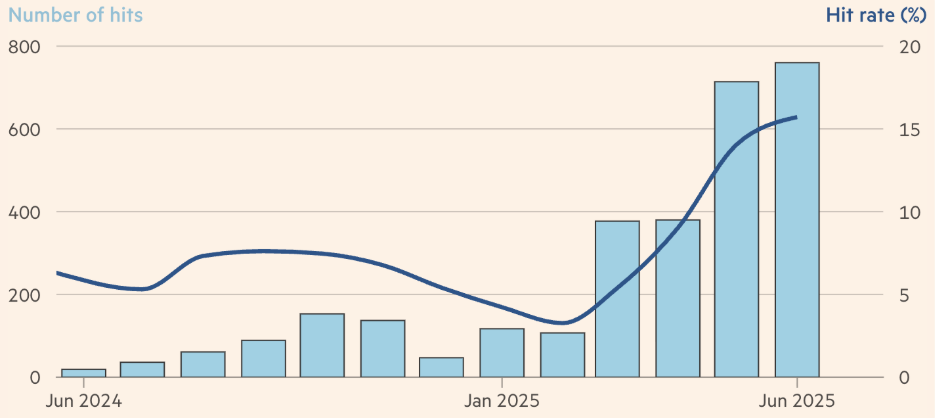From Forests to Deserts: Are AI Drones the Future of Middle Eastern Warfare?
How Ukraine’s AI-Enhanced Drone Swarms Signal a New Era of Autonomous Warfare and What the Middle East Can Learn.

No Man’s Skies
As the will to fight on the ground has been tested to its limits, both Russia and Ukraine have taken their existential struggle to the skies. Drones manufactured by Moscow and Kyiv have increasingly become a hallmark of the ongoing war.
A report from the Financial Times indicates that neither state is limiting itself to conventional drone strikes. Russia has progressively relied on drone swarms—groups of coordinated drones that strike collectively without direct human control.
These Russian swarms, predominantly consisting of modified Iranian Shahed drones, have become ever more common in the conflict. According to Financial Times, the volume of Russian drone swarm attacks has risen sharply this year, with strikes now three times as likely to hit their target as at the beginning of 2025.

Fighting fire with fire, Ukraine has launched its own drone operations. In June, the country executed a covert mission known as Operation Spiderweb, targeting five Russian air bases with drones transported and launched from trucks inside Russian territory.
Now, Ukrainian startup Swarmer has developed a new line of drone swarms. This latest iteration elevates asymmetric warfare through AI integration, significantly amplifying the capabilities of these swarms.
The implications extend far beyond Eastern Europe. For the Middle East and North Africa—a region defined by rapid adoption of military technology—the emergence of AI-powered drone swarms signals that the rules of warfare are changing, and no regional power intends to be left behind.
How It Works
According to Swarmer, the drones operate in a three-pronged approach: one drone conducts reconnaissance, while the other two carry and deploy small bombs.
Once a target area is identified, the reconnaissance drone calculates and communicates an optimal attack route to the bomber drones, which—using AI—determine when and how to release their payloads.
Swarmer’s CEO, Serhii Kupriienko, told the Wall Street Journal that the technology has been tested with up to 25 drones, with larger-scale trials involving over 100 drones planned.
Why It’s a Game Changer
Drone swarms function as force multipliers. By combining low-cost autonomous drones with AI-driven coordination, militaries can execute precise operations at scale. The Ukrainian example demonstrates that these systems are no longer theoretical—they are operational.
Swarmer’s approach also reduces the number of required operators—from the typical nine to three personnel—and limits the number of drones in use, reducing the risk of Ukrainian technology falling into Russian hands and being reverse-engineered.
From Deserts to Skies
MENA regional states with advanced defense budgets are closely observing developments on the Ukrainian battlefield, seeking lessons they can apply.
Drones are already a staple of warfare in the MENA region. A notable example is the Rapid Support Forces’ strike on Port Sudan in May, targeting the Sudanese Armed Forces’ headquarters, previously considered a safe haven.
More concerning is the use of drones by non-state actors. Iran has evolved from a regional drone manufacturer to a global supplier, providing systems to allies such as the Houthis.
Army Gen. Bryan P. Fenton warned Congress about this very proliferation is upending war between the U.S. and its rivals:
"The character of war is changing faster than we've ever seen. The innovation cycle now turns in days and weeks, not months and years. Our adversaries use $10,000 one-way drones that we shoot down with $2 million missiles—that cost-benefit curve is upside down."
For Gulf states facing Iranian threats, the clock is ticking. Swarm capabilities may be critical to strengthening deterrence, especially as non-state actors exploit similar technologies to counter conventional military advantages.
Ethics, Escalation, and Accountability
Autonomous systems also raise ethical and operational questions. If swarms operate with limited human oversight, who is responsible for unintended consequences? Could a malfunction escalate a conflict faster than human decision-making can manage?
These are challenges the MENA region must address even as states plan military modernization. AI in warfare is not just a technological issue, it's a governance challenge, requiring careful doctrine, rules of engagement, and international norms.
Looking Ahead
Ukraine’s deployment of AI-driven drone swarms is more than a tactical experiment; it previews the next generation of warfare. For the Middle East, it's a reminder that technological parity is no longer optional. Defense planners, policymakers, and private-sector partners must collaborate to ensure autonomous systems enhance security rather than destabilize it.
The region’s next conflicts will likely involve fleets of small, intelligent drones capable of outmaneuvering conventional defenses. For regional militaries, the question is clear: are they ready for a battlefield where human reflexes are no longer the fastest response?
As drones rewrite the rules of modern warfare, urgent questions arise for policymakers, militaries, and defense manufacturers. With the Middle East taking note of the asymmetric warfare unfolding in Ukraine, regional defense posture is entering a critical inflection point.
For tailored briefings, strategy consultations, or customized risk assessments on global defense trends and their implications for the region, follow and contact Oasis Policy Advisory. We offer strategic intelligence at the nexus of technology governance, commercial diplomacy, and market dynamics across the Middle East & North Africa.


